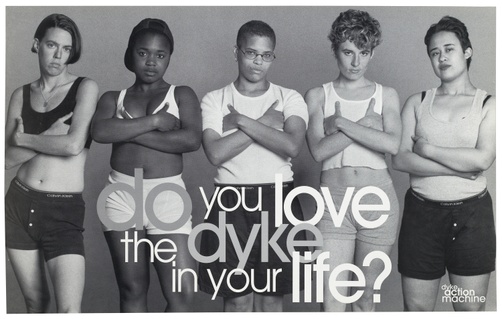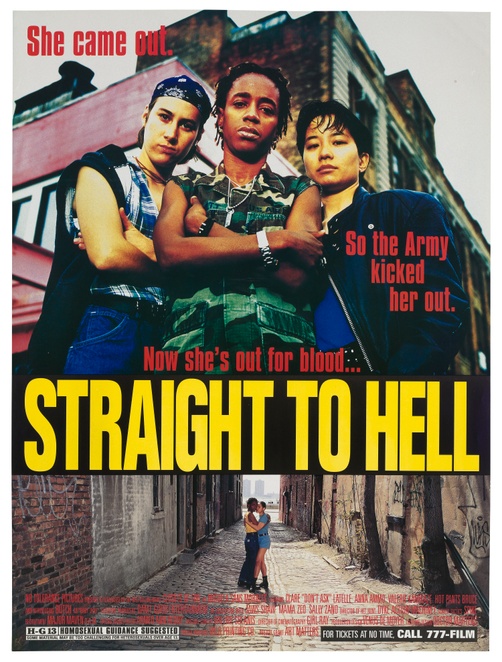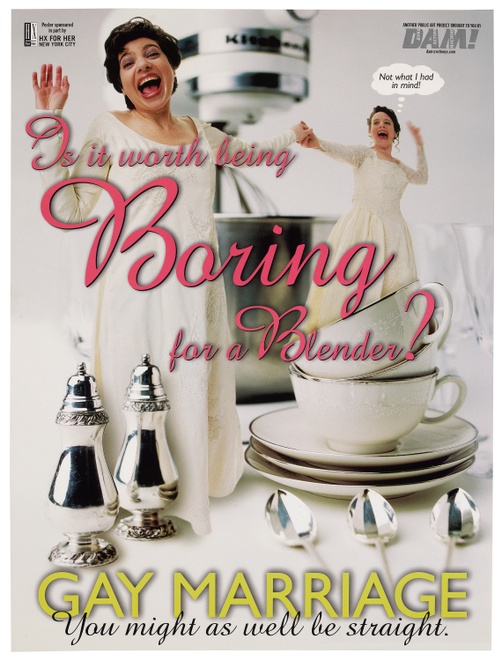Carrie Moyer
Artist and cofounder of Dyke Action Machine!
Dyke Action Machine! was around for seventeen years, which is an unusually long time. I think it’s because we only did one or two projects a year. Sue Schaffner, DAM! cofounder, and I would have these intense work sessions, and then we’d do our own thing. Our context was advertising because we lived in New York, where the streets were covered with posters, and we both worked at ad agencies. Everything was being pitched to straight consumers and, as lesbians, we were literally invisible in the mainstream media. About five years into our collaboration, it started to dawn on us: Is being recognized by capitalism the only way to verify your identity? And, ultimately, is that the best way to change culture?
A lot of the projects were done during June, Gay Pride Month in New York City. We would hire professionals to wheatpaste specific neighborhoods in Lower Manhattan, refreshing those areas over several weeks. Using a company protected our posters from “sniping,” the slang term for papering over someone else’s work. We would typically put up around four thousand posters during a project. Posters were an important means of communication in the East Village during the 1980s. The street was where mainstream advertising and radical, political messaging existed side-by-side.
Do You Love the Dyke in Your Life? (1993) was an appropriation of an ad for Calvin Klein underwear. Everything in the posters was made pro bono. Sue did the photo shoot, all the models were friends. At the time, you needed very powerful computers to do this stuff, which we didn’t have. I stayed late at work a lot, or we used our colleagues’ retouching studios. These posters were collective efforts.










